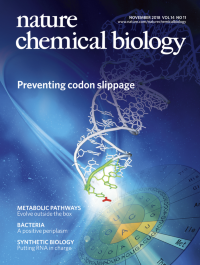 “Delayed neurologic sequelae (DNS) are among the most serious complications of carbon monoxide (CO) poisoning caused partly by elevated neuroinflammation.
“Delayed neurologic sequelae (DNS) are among the most serious complications of carbon monoxide (CO) poisoning caused partly by elevated neuroinflammation.
WIN 55,212-2, a non-selective agonist of cannabinoid receptors, has been demonstrated to have anti-inflammatory properties in various brain disorders.
The anti-inflammatory action of WIN 55,212-2 is potentially associated with driving microglial M2 polarization. ST2 signaling is important in regulating inflammatory responses and microglial polarization. Therefore, we aimed to investigate the neuroprotective effect of WIN 55,212-2 on DNS after CO poisoning and elucidate its relationship with ST2-mediated microglial M2 polarization.
The behavioral tests showed that treatment with WIN 55,212-2 significantly ameliorates the cognitive impairment induced by CO poisoning.
This behavioral improvement was accompanied by reduced neuron loss, decreased production of pro-inflammatory cytokines, and a limited number of microglia in the hippocampus. Moreover, WIN 55,212-2 elevated the protein expression of IL-33 (the ligand of ST2) and ST2, increased the ratio of CD206-positive (M2 phenotype) and ST2-positive microglia, and augmented production of M2 microglia-associated cytokines in the hippocampus of CO-exposed rats.
Furthermore, we observed that the WIN 55,212-2-mediated increases in ST2 protein expression, CD206-positive and ST2-positive microglia, and microglia-associated cytokines were blocked by the cannabinoid receptor 2 (CB2R) antagonist AM630 but not by the cannabinoid receptor 1 (CB1R) antagonist AM251. In contrast, the WIN 55,212-2-induced upregulation of the IL-33 protein expression was inhibited by AM251 but not by AM630.
Altogether, these findings reveal cannabinoid receptors as promising therapeutic agents for CO poisoning and identify ST2 signaling-related microglial M2 polarization as a new mechanism of cannabinoid-induced neuroprotection.”
https://www.ncbi.nlm.nih.gov/pubmed/31732924
https://link.springer.com/article/10.1007%2Fs12031-019-01429-2
 “Cannabinoids have been shown to exert analgesic and anti-inflammatory effects, and the effects of cannabinoids are mediated primarily by cannabinoid receptors 1 and 2 (CB1 and CB2).
“Cannabinoids have been shown to exert analgesic and anti-inflammatory effects, and the effects of cannabinoids are mediated primarily by cannabinoid receptors 1 and 2 (CB1 and CB2).
 “Delayed neurologic sequelae (DNS) are among the most serious complications of carbon monoxide (CO) poisoning caused partly by elevated neuroinflammation.
“Delayed neurologic sequelae (DNS) are among the most serious complications of carbon monoxide (CO) poisoning caused partly by elevated neuroinflammation. “The protective effect of
“The protective effect of  “Cannabis sativa L. is one of the most-studied species for its phytochemistry due to the abundance of secondary metabolites, including
“Cannabis sativa L. is one of the most-studied species for its phytochemistry due to the abundance of secondary metabolites, including 
 “The hemp plant (
“The hemp plant ( “Endocannabinoids are produced within the gastrointestinal (GI) tract and modulate energy homeostasis and food intake, at least in part, via vagally-dependent actions. The recent paper by Christie et al., [Christie, et al. J Physiol, 2019] demonstrate, for the first time, that
“Endocannabinoids are produced within the gastrointestinal (GI) tract and modulate energy homeostasis and food intake, at least in part, via vagally-dependent actions. The recent paper by Christie et al., [Christie, et al. J Physiol, 2019] demonstrate, for the first time, that  “Cannabis use disorder (CUD) prevalence among people reporting past-year cannabis use declined from 2002–2016.
“Cannabis use disorder (CUD) prevalence among people reporting past-year cannabis use declined from 2002–2016. “Growing evidence suggests that medical marijuana laws have harm reduction effects across a variety of outcomes related to risky health behaviors. This study investigates the impact of medical marijuana laws on self-reported health using data from the Behavioral Risk Factor Surveillance System from 1993 to 2013. In our analyses we separately identify the effect of a medical marijuana law and the impact of subsequent active and legally protected dispensaries. Our main results show surprisingly limited improvements in self-reported health after the legalization of medical marijuana and legally protected dispensaries. Subsample analyses reveal strong improvements in health among non-white individuals, those reporting chronic pain, and those with a high school degree, driven predominately by whether or not the state had active and legally protected dispensaries. We also complement the analysis by evaluating the impact on risky health behaviors and find that the aforementioned demographic groups experience large reductions in alcohol consumption after the implementation of a medical marijuana law.”
“Growing evidence suggests that medical marijuana laws have harm reduction effects across a variety of outcomes related to risky health behaviors. This study investigates the impact of medical marijuana laws on self-reported health using data from the Behavioral Risk Factor Surveillance System from 1993 to 2013. In our analyses we separately identify the effect of a medical marijuana law and the impact of subsequent active and legally protected dispensaries. Our main results show surprisingly limited improvements in self-reported health after the legalization of medical marijuana and legally protected dispensaries. Subsample analyses reveal strong improvements in health among non-white individuals, those reporting chronic pain, and those with a high school degree, driven predominately by whether or not the state had active and legally protected dispensaries. We also complement the analysis by evaluating the impact on risky health behaviors and find that the aforementioned demographic groups experience large reductions in alcohol consumption after the implementation of a medical marijuana law.” “For persons living with chronic conditions, health-related quality of life (HRQoL) symptoms, such as pain, anxiety, depression, and insomnia, often interact and mutually reinforce one another.
“For persons living with chronic conditions, health-related quality of life (HRQoL) symptoms, such as pain, anxiety, depression, and insomnia, often interact and mutually reinforce one another. “The CB1 receptor mediates the central nervous system response to cannabinoids, and is a drug target for pain, anxiety and seizures.
“The CB1 receptor mediates the central nervous system response to cannabinoids, and is a drug target for pain, anxiety and seizures.